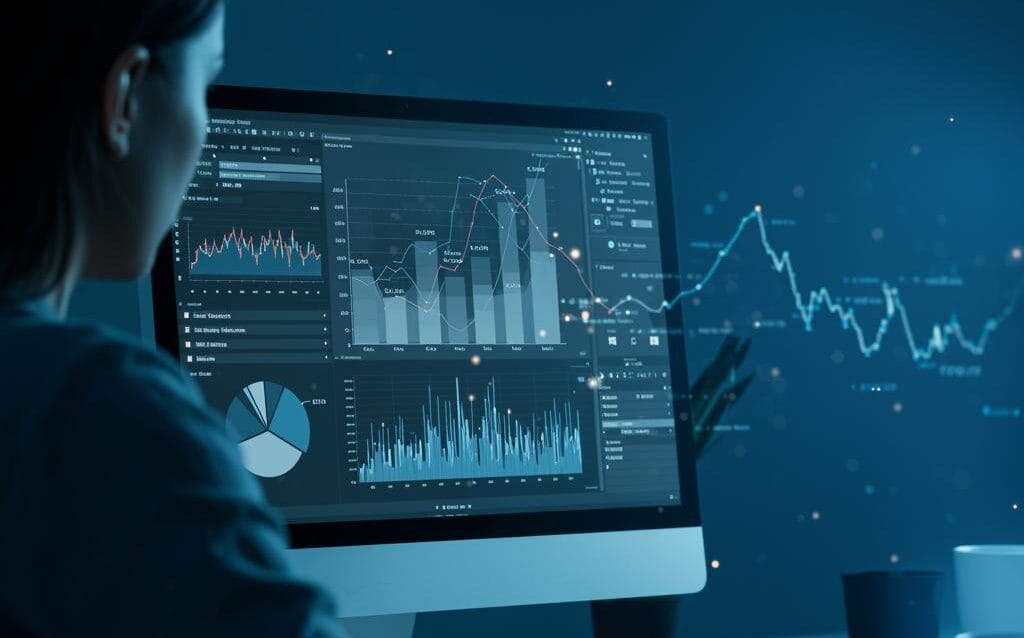Time Series Analysis: Tools & Techniques for Data Insights
Time Series Data Analysis: Unveiling Insights from Sequential Data
Time series data analysis is a powerful tool for understanding and predicting patterns in data that evolves over time. From stock market prices to weather patterns, from website traffic to sensor readings, time series data is ubiquitous. This blog post provides a comprehensive overview of the tools and techniques used to analyze this type of data, enabling you to extract valuable insights and make informed decisions.
Understanding Time Series Data
What is Time Series Data?
Time series data is a sequence of data points indexed in time order. Unlike cross-sectional data, which represents a snapshot at a single point in time, time series data captures changes over a continuous period. Key characteristics include:
- Ordered Sequence: Data points are arranged chronologically.
- Time-Based Index: Each data point is associated with a specific time stamp.
- Temporal Dependence: Values at one point in time are often correlated with values at previous points.
Key Components of Time Series
Understanding the underlying components of a time series is crucial for effective analysis:
- Trend: The long-term direction or movement of the data. It can be increasing, decreasing, or stable.
- Seasonality: Recurring patterns that occur within a fixed period (e.g., daily, weekly, monthly, yearly).
- Cyclicality: Fluctuations that occur over longer periods (e.g., economic cycles). These are less predictable than seasonality.
- Irregularity (Noise): Random, unpredictable variations in the data.
Essential Tools for Time Series Analysis
Programming Languages and Libraries
Several programming languages and libraries are well-suited for time series analysis:
- Python: A versatile language with powerful libraries like:
- Pandas: For data manipulation and time series indexing.
- NumPy: For numerical computations.
- Statsmodels: For statistical modeling and time series analysis.
- Scikit-learn: For machine learning models.
- Prophet: A library specifically designed for forecasting time series data.
- R: A statistical programming language with extensive time series packages:
- forecast: For forecasting models and analysis.
- tseries: For time series analysis and modeling.
- xts: For extensible time series objects.
Data Visualization Tools
Visualizing time series data is essential for identifying patterns and anomalies:
- Matplotlib (Python): A fundamental plotting library.
- Seaborn (Python): A higher-level plotting library built on Matplotlib, offering more aesthetically pleasing visualizations.
- ggplot2 (R): A powerful and flexible plotting package based on the Grammar of Graphics.
- Tableau: A popular business intelligence tool for creating interactive dashboards and visualizations.
Techniques for Time Series Analysis
Decomposition
Decomposition involves breaking down a time series into its constituent components (trend, seasonality, cyclicality, and irregularity). This helps to understand the underlying drivers of the data and can simplify forecasting.
Practical Insight: Visualizing the decomposed components can reveal hidden patterns and dependencies that are not apparent in the raw data.
Smoothing Techniques
Smoothing techniques are used to remove noise and highlight the underlying trend in a time series. Common methods include:
- Moving Average: Calculates the average of data points over a specified window.
- Exponential Smoothing: Assigns exponentially decreasing weights to older data points. Different variations (e.g., Simple Exponential Smoothing, Holt’s Linear Trend, Holt-Winters’ Seasonal) are suitable for different types of time series.
Practical Insight: Choosing the appropriate smoothing method depends on the characteristics of the time series. Simple Exponential Smoothing is suitable for data with no trend or seasonality, while Holt-Winters’ is appropriate for data with both trend and seasonality.
Statistical Modeling
Statistical models are used to capture the relationships within a time series and make predictions. Popular models include:
- ARIMA (Autoregressive Integrated Moving Average): A flexible model that can capture a wide range of time series patterns. It is defined by three parameters: p (order of autoregression), d (degree of differencing), and q (order of moving average).
- SARIMA (Seasonal ARIMA): An extension of ARIMA that incorporates seasonality.
- Vector Autoregression (VAR): Used for modeling multiple time series that are interdependent.
Practical Insight: Model selection often involves analyzing the Autocorrelation Function (ACF) and Partial Autocorrelation Function (PACF) of the time series to determine the appropriate model order.
Machine Learning Models
Machine learning models can also be used for time series forecasting. These models often require feature engineering to transform the time series data into a format suitable for the algorithm.
- Regression Models: Linear Regression, Support Vector Regression (SVR).
- Tree-Based Models: Random Forests, Gradient Boosting Machines (GBM).
- Recurrent Neural Networks (RNNs): LSTMs (Long Short-Term Memory) and GRUs (Gated Recurrent Units) are particularly well-suited for capturing long-term dependencies in time series data.
Practical Insight: Feature engineering, such as creating lagged variables (past values of the time series), rolling statistics, and time-based features (e.g., day of week, month of year), can significantly improve the performance of machine learning models.
Conclusion
Time series data analysis provides a powerful toolkit for understanding and predicting patterns in data that evolves over time. By mastering the tools and techniques discussed in this blog post, you can unlock valuable insights from your data and make more informed decisions. Remember to carefully consider the characteristics of your time series when selecting the appropriate analysis methods and models. Continuous learning and experimentation are key to becoming proficient in this fascinating field.

